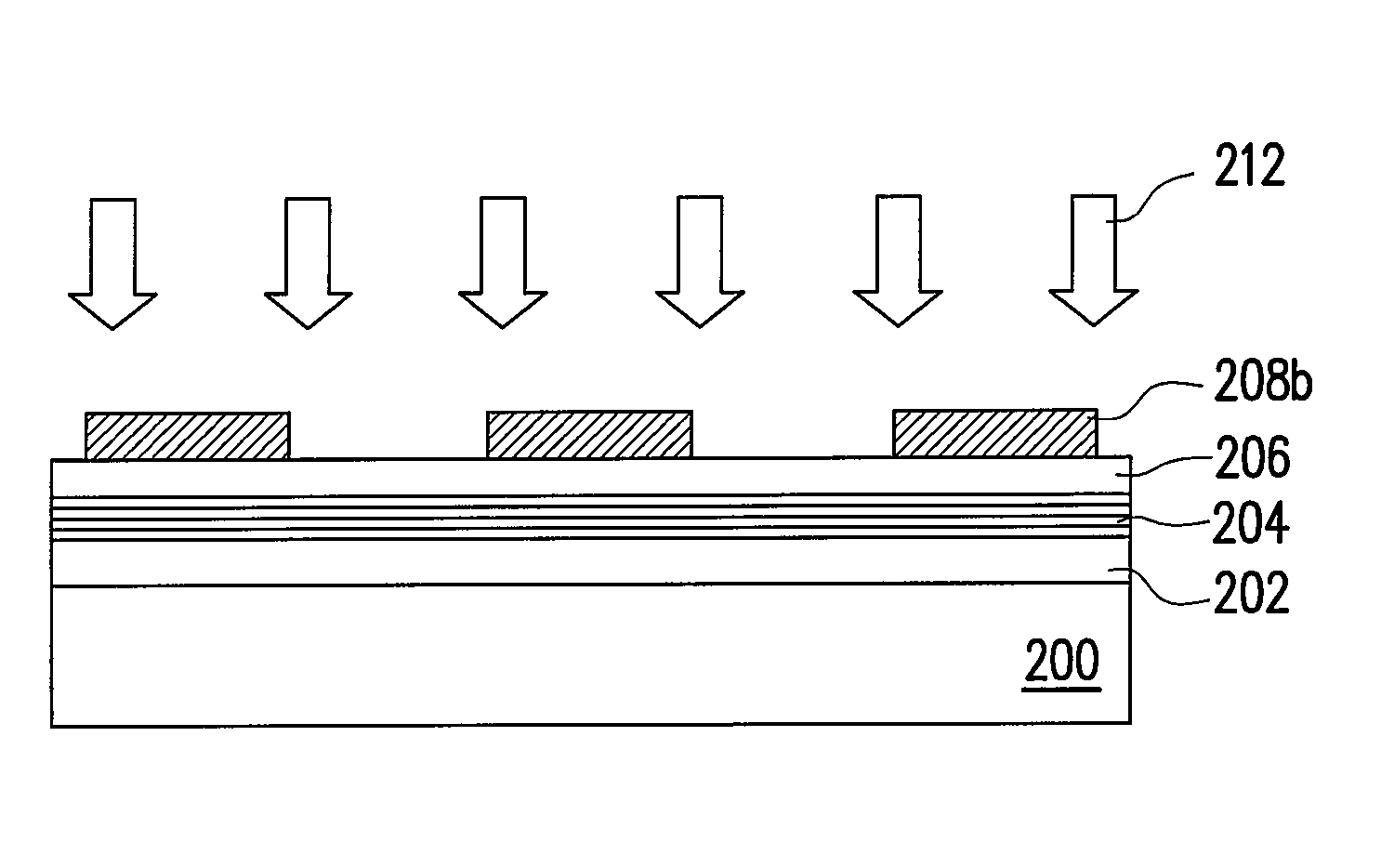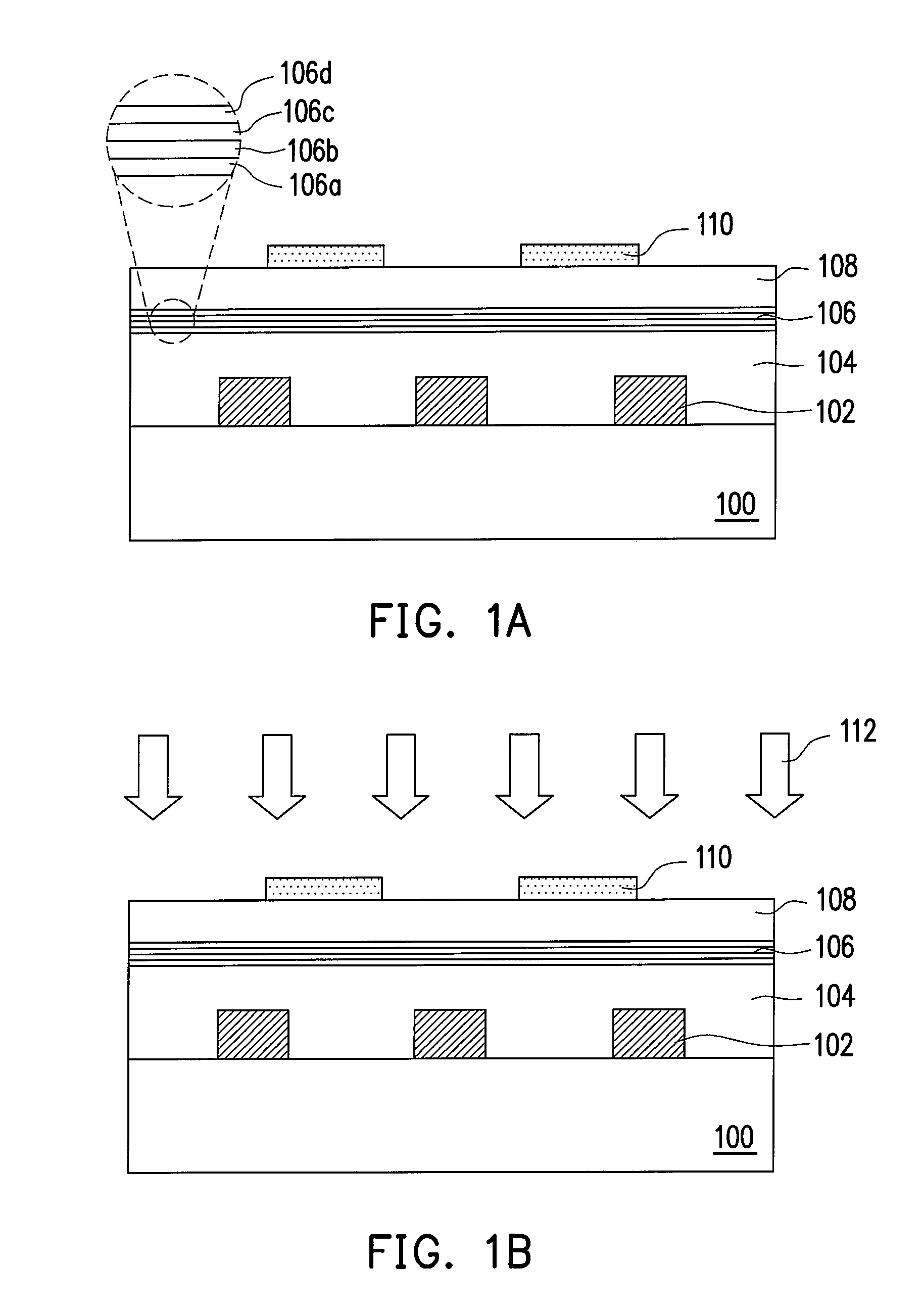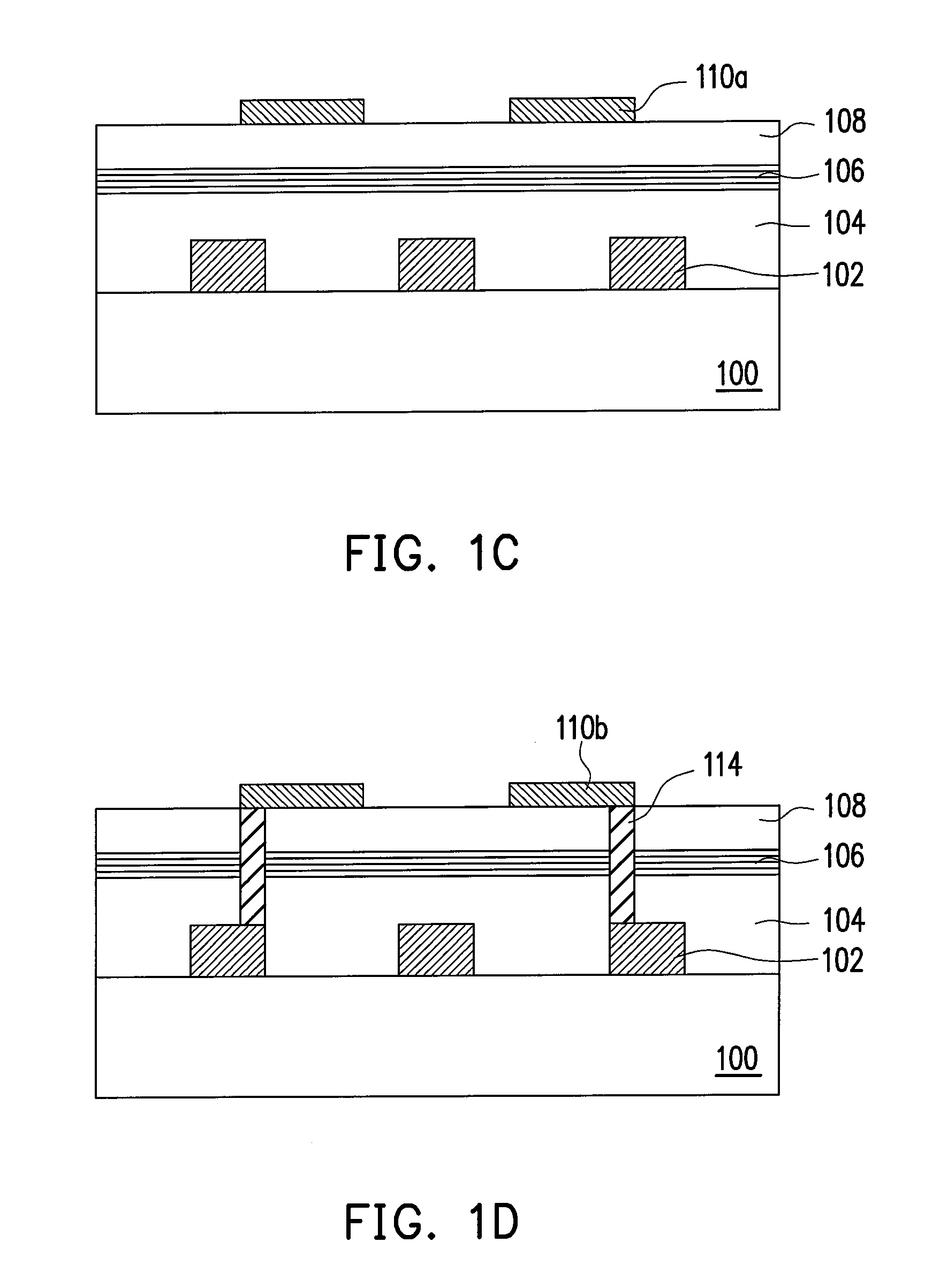Laser crystallization process and laser process
a laser crystallization and laser technology, applied in the direction of semiconductor/solid-state device manufacturing, basic electric elements, electric devices, etc., can solve the problems of poor crystallization uniformity, easy damage to the device of the lower layer, rough active layer surface, etc., to achieve the effect of bad crystallization uniformity and easy damag
- Summary
- Abstract
- Description
- Claims
- Application Information
AI Technical Summary
Benefits of technology
Problems solved by technology
Method used
Image
Examples
first embodiment
The First Embodiment
[0016]FIGS. 1A through 1D are schematic views illustrating the laser crystallization process used for forming stack devices according to one embodiment of the present invention. Referring to FIG. 1A, a substrate 100 is provided, which has a plurality of active devices 102 already formed thereon. The substrate 100 may be a wafer or a chip. The active devices 102 are metal-oxide-semiconductor (MOS) transistors, for example. A method for forming the active devices 102 on the substrate 100 adopts a semiconductor fabrication process as known in the prior art, for example. Next, a first dielectric layer 104 is formed above the substrate 100 covering the active devices 102. A material of the first dielectric layer 104 is silicon oxide, silicon nitride, for example. A method for forming the first dielectric layer 104 is a chemical vapor deposition (CVD) process or a coating process.
[0017]Then, a multi-layer reflective layer 106 is formed on the first dielectric layer 104...
second embodiment
[0026]FIGS. 2A through 2D are schematic views illustrating a laser process used for fabricating a flexible display panel according to one embodiment of the present invention. Referring to FIG. 2A first, a substrate 200 is provided. A material of the substrate 200 includes an organic polymer material, such as polyimide. Generally, the substrate used for a flexible display panel is consisted of the organic polymer material, and therefore, the substrate is flexible.
[0027]Next, a multi-layer reflective layer 204 is formed above the substrate 200. In one embodiment, before forming the multi-layer reflective layer 204, it further includes forming a buffer layer 202 on the substrate 200. The multi-layer reflective layer 204 is formed by alternately stacking at least one high-refractive dielectric material and at least one low-refractive dielectric material. As shown in a magnified view on the left of FIG. 2A, the multi-layer reflective layer 204 is formed by alternately stacking a low-refr...
PUM
| Property | Measurement | Unit |
|---|---|---|
| temperature | aaaaa | aaaaa |
| wavelength | aaaaa | aaaaa |
| reflectivity | aaaaa | aaaaa |
Abstract
Description
Claims
Application Information
 Login to View More
Login to View More - R&D
- Intellectual Property
- Life Sciences
- Materials
- Tech Scout
- Unparalleled Data Quality
- Higher Quality Content
- 60% Fewer Hallucinations
Browse by: Latest US Patents, China's latest patents, Technical Efficacy Thesaurus, Application Domain, Technology Topic, Popular Technical Reports.
© 2025 PatSnap. All rights reserved.Legal|Privacy policy|Modern Slavery Act Transparency Statement|Sitemap|About US| Contact US: help@patsnap.com



